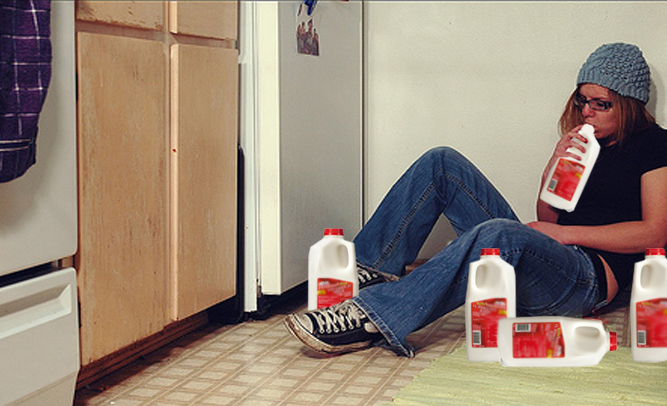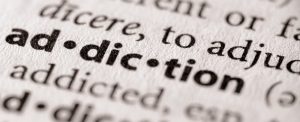What is Huffing?
Huffing, sniffing, and bagging is what kids are doing these days to get high. Whatever they call it, the basics of it are when a teenager or even younger kids inhale chemical vapors for a quick high. It is estimated that as many as two million of our children aged 12-17 are huffing, sniffing or bagging – many of which are addicted. Some experts studying this ongoing issue say that first experiences can be as early as 6 – 8.
While most parents are serious and watching for signs of their kids using drugs or alcohol, kids are turning to the poison found on any shelf in our homes and legally bought at any store. Inhalants are cheap and available in most households.
So what are they huffing? Try paint thinner, gasoline, markers, nail polish, correction fluid, rubber cement, keyboard cleaners and a whole list of other substances that are considered legal. Just about everything in an aerosol can be mind altering if it is inhaled deeply and don’t think it is something new. A disturbing study as early as 2005 revealed that girls are huffing more than boys.
The key ingredient for many of the products the kids are using is toluene, a clear, colorless liquid used as a solvent and found in gasoline, paint thinners, fingernail polish, antifreeze and countless other highly toxic items. Inhaling this substance can result in slurred speech, disorientation and other symptoms that are associated with intoxication.
You might think that your child would never do something so seemingly stupid. But, if their friends are telling them it’s fun and they should try it and you haven’t specifically talked to them about the dangers of sniffing furniture polish, are your really convinced that they won’t?

Long term effects of Huffing
Repeated exposure to toluene causes permanent brain damage, depression and even death. Other seemingly innocent products that kids are using to get high include cough and cold medicines, hand sanitizer, dry-erase markers, nitrous oxide canister (whip-it) , body spray, and nutmeg. Yes, nutmeg. Our kids are watching YouTube and learning that if you add enough nutmeg to your morning OJ you can hallucinate.
There is a long list of inventive abuses for using these over the counter items: A half-bottle of Robitussin in a sports drink enables “Robo-tripping” in public. For more information on it check out YouTube again which has over 500 videos of Robotripping teens. A box of Coricidin (“Triple C”) tablets added to a bag of Skittles that can be taken to school. Dry-erase markers can be sniffed. Nitrous oxide capsules, aka “whip-its,” are available online. Kids put them into balloons, tie them off and they use them for huffing.
The list goes on and on.
One of the newest methods of getting high is using Axe Body Spray (One of the “10 most shoplifted items”). A group of kids spray it into the crooks of their arms, then they all stand in a circle to contain the fumes and inhale. The high only lasts a few seconds so it’s very hard to trace in the bloodstream, the kids just smell really good.
Parents need to become more aware of the ways that youths are finding to get intoxicated or high, so they can watch for the indicators, and have a serious conversation with their kids about the dangers. Much of this activity is taking place right under our noses. For example, kids are drinking hand sanitizer, because it has an alcohol concentration of 80 percent.
Signs your child might be huffing.
A kid high on chemicals will be dazed, have slurred speech, may lose their appetite or be nauseous. Watch them for general drunk-like behavior. They might have a consistent runny nose and sores rashes around the mouth and nose. A simple, common tip off is the strong chemical odor on their breath.
You may see paint or other stains from cans on the child’s face, hands, or clothing. Look for an excess of empty containers in the trash or maybe hidden around the house or outside. Kids also put substances on rags to inhale them so watch for chemical soaked cloth or clothing.
Teen prescription drug use is at epidemic levels
While all of these uses are highly dangerous for our children one of the more disturbing things that is happening is that our kids are using prescription drugs. This problem is currently at epidemic proportions. There is a prevailing assumption that prescription medications are safe. Kids think that if it’s in the medicine cabinet it’s okay because it was prescribed by a doctor.
Unfortunately a child’s access to prescription drugs is most often found through unwitting adults. Drugs containing benzodiazepine (including Valium and Xanax) are opiates, and they are incredibly lethal when combined with alcohol.
Why do something so stupid?
The reason youths make such ill-advised choices is in part physiological. Scientific study has proven that prior to the age of 20 or so, the brain’s frontal cortex (which manages our self-regulating mechanism) has not fully developed. The result is kids not limiting or even being able to manage their behaviors.
Such behaviors are self-perpetuating, and early substance abuse can cause neuroanatomical effects of the brain. Many of these household substances when used for huffing destroy the prefrontal cortex of the brain, making it so even if you want to stop making stupid decisions, your brain says ‘too bad; I’m done. And there are no brain transplants available.
Dropping a few dabs of Visine into a drink can cause hallucinations, too. Using substances such as eye-drops and hand sanitizer will result in side effects such as vomiting, stomach cramps and diarrhea. An adult might experience those symptoms and realize that they don’t want to do that again. While for kids it’s a badge of honor and when they’re done throwing up, they’ll have another shot.
What drives a young person’s quest to numb reality?
Its no secret that teens have a propensity toward addiction. Among the experts surveyed, the consensus is that social media has exacerbated the ever-present pressures of school life. Whether it’s a lack of communication with parents, their social status, body image or just typical hormonal growing pains, in seconds, a teen can text, tweet or post a comment about another to hundreds of peers, with devastating effects.
Experts cite the key factors as being social media stress, teen dating violence and cyberbullying. Keep in mind that most teens have a minimum of three Facebook pages: one their parents see, another that some peers see, and then one all of their peers see. It’s pretty shocking when you see what kids are saying about each other. Then there are plethora of other social media apps that kids are using to ensure that their parents don’t see what they and their peers are saying to each other.
Dangers of Huffing
What can you do?
Fortunately, there are many parents, local law enforcement agencies and school administrators who are tackling these issues head-on. In some cases, offering on-campus drug/alcohol counseling services, while school resource officers from local police departments help channel youths into appropriate diversionary programs.
There is a long list of subset problems that surround chronic substance abuse with youth breaking into homes and stealing items that can be sold in order to buy drugs. Gang warfare erupts when a potential interloper threatens drug sales on a specific turf. The incidence of violent crime among teenagers is way up in many large cities and the violence is escalating.
With summer in full swing, and, in many cases, both parents working outside of the home, our continued vigilance is mandatory. Parents can’t put their kids in bubble-wrap, but knowing who their friends are, ensuring they are where they say they are, and that they are doing what they say they’re doing, is essential to keep our children safe from making bad decisions that could affect them for life. But, top priority for every parent should be to educate themselves about the substances that can be abused, watch for changes in behavior, and pay attention to the warning signs of substance abuse.
Get on YouTube, read up online, and be aware of what your kids have access to. For those of you who don’t want to “invade your child’s privacy,” remember that your kids are living in your house and they’re don’t pay rent. You have every right to search their room and their backpack and their dresser drawers and it’s okay to ask questions. You need to know what’s going on at all times. It’s up to you to help them understand the dangers that are out there because they don’t know and can’t know unless you teach them or something devastating happens. Its important to understand that Huffing doesn’t generally happen in moderation, most kids huffing are facing other addiction issues.
If you believe you child is using drugs, find professional help. Don’t be afraid to have uncomfortable conversations with them. No parent should ever have to look back and regret that they didn’t have that tough conversation with their kids.

 It’s important before you have a surgery to plan ahead. Talk to your doctor about managing your pain. Many painkillers for post-opt are very easy to become addicted to. Knowing what to expect beforehand can help you be hyper-aware of whether you may be on the path to becoming addicted to your painkillers. If you have ever struggled with addiction in the past, let your doctor know so that you can find alternative methods to mediate your pain.
It’s important before you have a surgery to plan ahead. Talk to your doctor about managing your pain. Many painkillers for post-opt are very easy to become addicted to. Knowing what to expect beforehand can help you be hyper-aware of whether you may be on the path to becoming addicted to your painkillers. If you have ever struggled with addiction in the past, let your doctor know so that you can find alternative methods to mediate your pain.